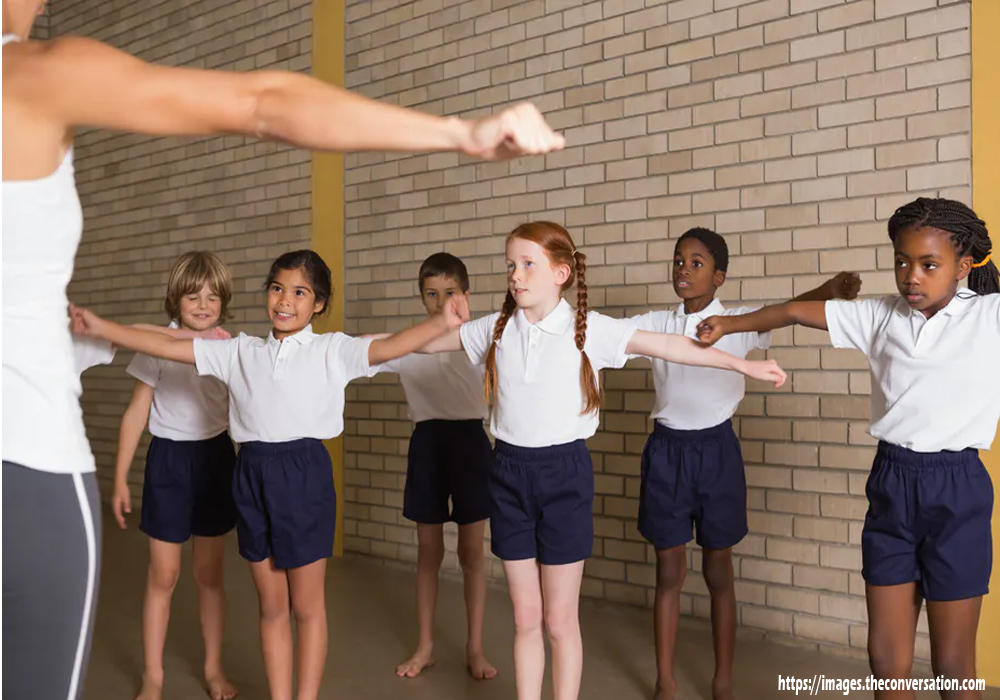In the United States, we tend to think of learning outcomes for students as a combination of what happens in the classroom and at home. Although this is certainly true, there are other important factors that contribute to how well our children learn and grow in school. The quality of the communities they live in can have a major impact on academic achievement; this includes things like poverty rates and access to health care services. In fact, studies show that children who live in low-income communities with high crime rates tend to perform worse academically than their peers who live in wealthier neighborhoods with lower crime rates.
The Best of Both Worlds
Community-centered schools can help improve academic achievement.
Schools should focus on the whole child, not just their academic needs. A school that focuses on the whole child will be able to create an environment where children feel safe and supported, which will lead them to have better outcomes both inside and outside of school. When students feel safe at school, they are more likely to engage in positive behaviors such as asking questions or participating in class activities. This leads to increased academic success because it allows teachers more time for instruction instead of addressing behavior issues or dealing with discipline problems caused by a lack of safety at school (e.g., bullying).
One Size Does Not Fit All
One size does not fit all. It’s important to know your students, their needs, and your community. The same goes for the school itself. And finally–most importantly–you have to know what each teacher in your building needs in order for them to do their best work as educators.
This isn’t just about creating an environment where everyone gets along; it’s about creating a space where everyone can do their best work together toward a common goal: student success!
Creating a Culture of Care
Caring for others is a skill that can be taught and learned, just like any other. By creating a culture of caring within your school, you’ll help students develop their capacity to care for themselves, each other and the environment. Here are some ways to do this:
- Teach students how they can help one another. For example, if one student needs extra time on an assignment because of a disability or learning challenge (such as dyslexia), help him or her find another student who might be able to assist with proofreading or editing the work before handing it in–and then make sure both parties know what’s expected from them by setting clear expectations ahead of time! This kind of mentoring relationship has been shown to improve academic performance over time because it gives kids confidence when they’re feeling overwhelmed by challenges at school; knowing someone else cares makes all the difference in how well they do under pressure.* Help teachers understand how their own behavior affects others’ feelings.* Encourage everyone involved–teachers included!–to speak up if someone appears upset or stressed out; don’t assume someone else will notice something first unless there’s no way anyone would even think twice about saying something without prompting first anyway.* When possible use natural materials instead synthetic ones so there isn’t toxic waste produced during manufacturing processes which may harm workers’ health later down line .
A Community-Centered School Environment
A community-centered school environment is one in which students feel safe, supported and engaged. It’s a place where they can learn to care for others, practice kindness and compassion, make connections with their communities and understand their role as members of society.
In order to create this kind of space educators must be intentional about creating opportunities for students’ social-emotional learning (SEL). SEL involves teaching children how to manage emotions effectively so they can function well both at home and in school environments.
Schools should strive for an inclusive environment where all students feel welcome and included regardless of race/ethnicity or socioeconomic status because these factors influence academic achievement positively if there is no discrimination present within the school system itself
Helping Schools to Be More Inclusive and Collaborative
Inclusive and collaborative schools are better for students. Students in inclusive environments learn more, are more engaged, and have higher graduation rates.
Inclusive Schools: Inclusive schools include all children regardless of race, ethnicity, language proficiency or disability status by building strong relationships with families and the community at large to ensure that no student is left behind in any way shape or form. Collaborative Learning Teams: Collaborative learning teams consist of teachers who work together to create an environment where each member has a voice in decision making while also contributing his/her expertise to solve problems related to teaching methods or curriculum design etcetera.. Community Collaboration: Community collaboration occurs when people from different organizations work together toward common goals such as helping students succeed academically by providing tutoring services during after school hours so they don’t fall behind academically due too busy schedules during daytime hours when most parents need them at home because both parents work full time jobs outside our community which leaves no one else available except maybe grandparents but even then sometimes there aren’t enough hours left over after everyone goes home so what happens next?
Supporting Families and Communities With Information, Resources and Services
Supporting families is important. Supporting the community means supporting families, and that’s what we do at Caring Community Schools. We provide information, resources and services to help our students succeed in school and beyond.
- Information: We share news about our schools through our website, social media channels, newsletters and other communications vehicles that reach hundreds of thousands of people each year–including parents who may not have internet access at home but can still read our messages on their phones or tablets when they’re out shopping or waiting for transportation after school let out early due to inclement weather conditions such as snowstorms (like we had last week!).
- Resources: Our online resource library contains more than 1,500 pages of curriculum materials developed by teachers from across Pennsylvania who want others doing similar work to benefit from their knowledge about best practices for teaching young children how much fun learning can be!
- Services: These include support groups where parents discuss common challenges; one-on-one tutoring sessions with trained volunteers who know how difficult it can be when your child has difficulty keeping up with peers academically; professional development workshops where teachers learn new strategies such as how best approach teaching literacy skills during this time period when many kids struggle with reading comprehension issues because so much technology use has become part of daily life nowadays…
Caring Communities Can Lead to Better Education Outcomes
The evidence is clear: caring communities can lead to better education outcomes. For example, research shows that students who feel safe and supported are more likely to learn, which in turn helps them graduate from high school and go on to college. Caring adults in a child’s life also have a positive effect on educational achievement–they may help provide resources for learning or serve as role models for how to be successful in school or at work later in life.
We believe that caring communities are the best way for schools to be successful. We have seen firsthand how this approach can help students achieve academic success and develop a positive self-image. Our hope is that more educators will embrace these ideas and make them part of their own school cultures




